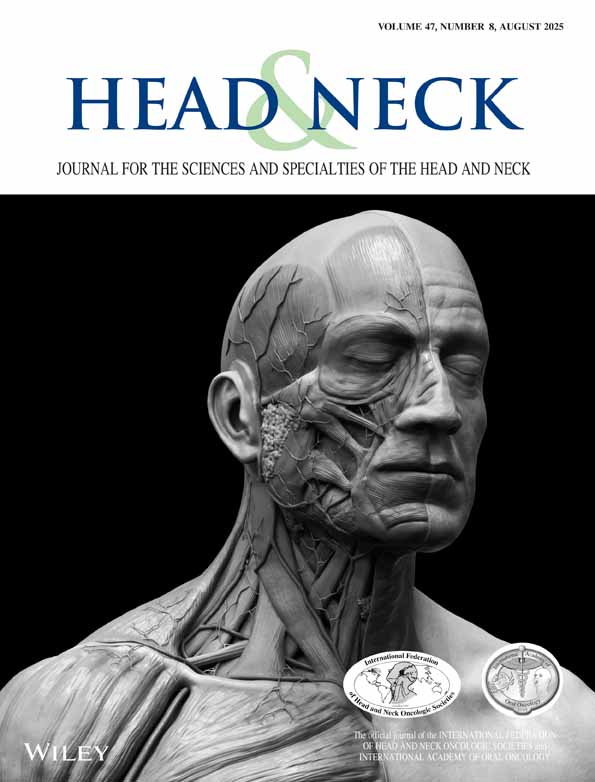Tissue oxygen distribution in head and neck cancer patients
Abstract
Background
The importance of hypoxia in limiting the sensitivity of tumor cells to ionizing radiation has long been known.
Methods
We evaluated the tissue oxygenation status with a polarographic needle electrode system in 37 patients with malignancies of the head and neck and correlated the pO2 of 25 patients with treatment outcome.
Results
Sixteen tumors contained areas of severe hypoxia, defined by pO2 values below 2.5 mm Hg. Tumor oxygenation parameters were not correlated with hemoglobin, age, and history of tobacco use. There were no subcutaneous pO2 values below 10 mm Hg (ie, no areas of moderate or severe hypoxia), whereas this degree of hypoxia was commonly found in the tumors. Though not statistically significant, hypoxic tumors showed trends for poorer treatment outcome.
Conclusion
Our data demonstrate a great interindividual variability in the oxygenation of head and neck cancers and appears unassociated with clinical parameters. The method is capable of identifying patients with poorly oxygenated tumors, thereby providing important information for selecting patients who might need customized therapy designed to kill hypoxic tumor cells. Hypoxic tumors show a consistent trend for poor treatment outcome. © 1999 John Wiley & Sons, Inc. Head Neck 21: 146–153, 1999.




